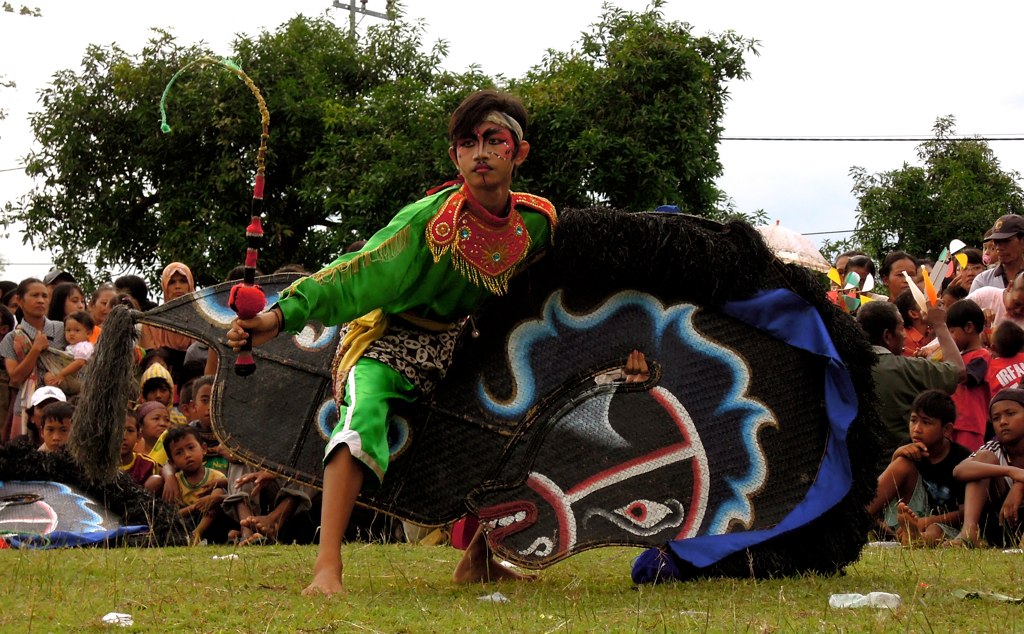In the heart of Indonesia’s cultural landscape lies Kabupaten Trenggalek, a region renowned for its vibrant traditional arts. Among its diverse artistic expressions is the captivating Jaranan Pegon. This unique form of Jaranan derives its name from the word “pego,” meaning incomplete or not fully equipped. This term alludes to the use of a simplified set of gamelan instruments consisting only of kendang (drum), kenong (gong-chime), gong, and slompret (a type of gong).
Despite its minimalist instrumentation, Jaranan Pegon emanates a powerful allure, drawing inspiration from the rich tapestry of Indonesian folklore and wayang (shadow puppet) characters. It represents a fusion of tradition and innovation, preserving cultural heritage while embracing contemporary influences. Through its rhythmic movements and melodious beats, Jaranan Pegon transcends mere entertainment, offering a glimpse into the soul of Trenggalek’s artistic spirit.
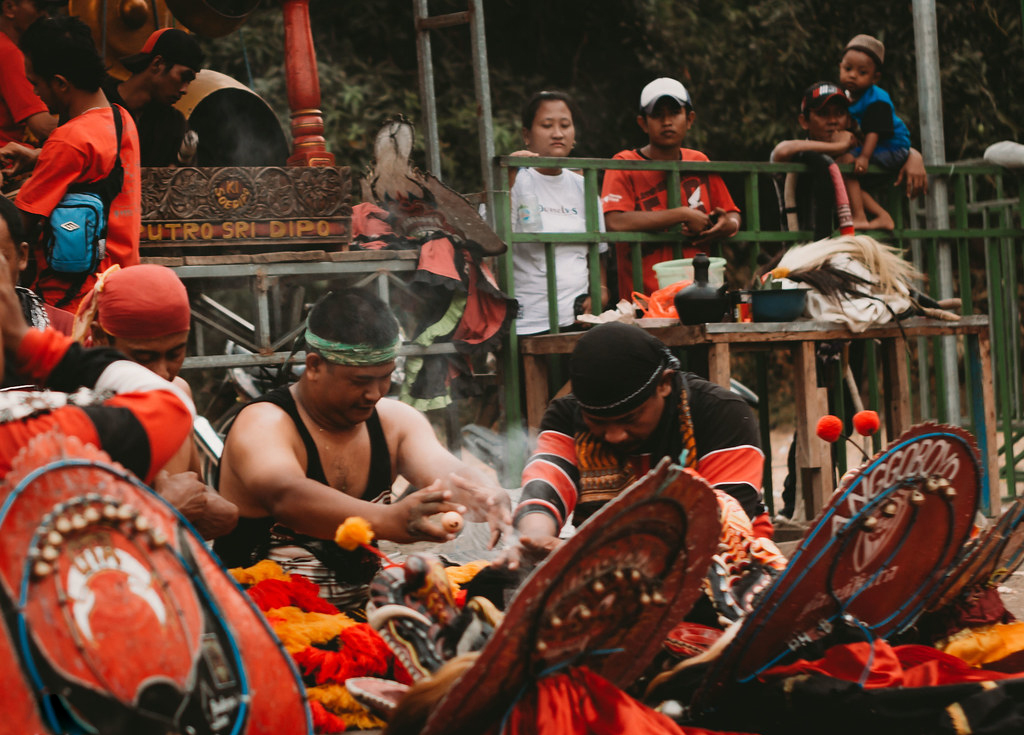
To delve deeper into the enchanting world of Jaranan Pegon and its connection to iconic wayang figures. By immersing oneself in the intricate rhythms and symbolic narratives of Jaranan Pegon, one can truly appreciate the cultural wealth of Kabupaten Trenggalek and its enduring legacy.
The Origins of Jaranan Pegon
Jaranan, a traditional art form dating back to the 11th century, has deep roots in Trenggalek. Jaranan Pegon, specifically, traces its origins to the village of Birni, drawing inspiration from wayang tales. Initially, it was performed primarily for ritualistic purposes in Wonorejo Village, Gandusari District.
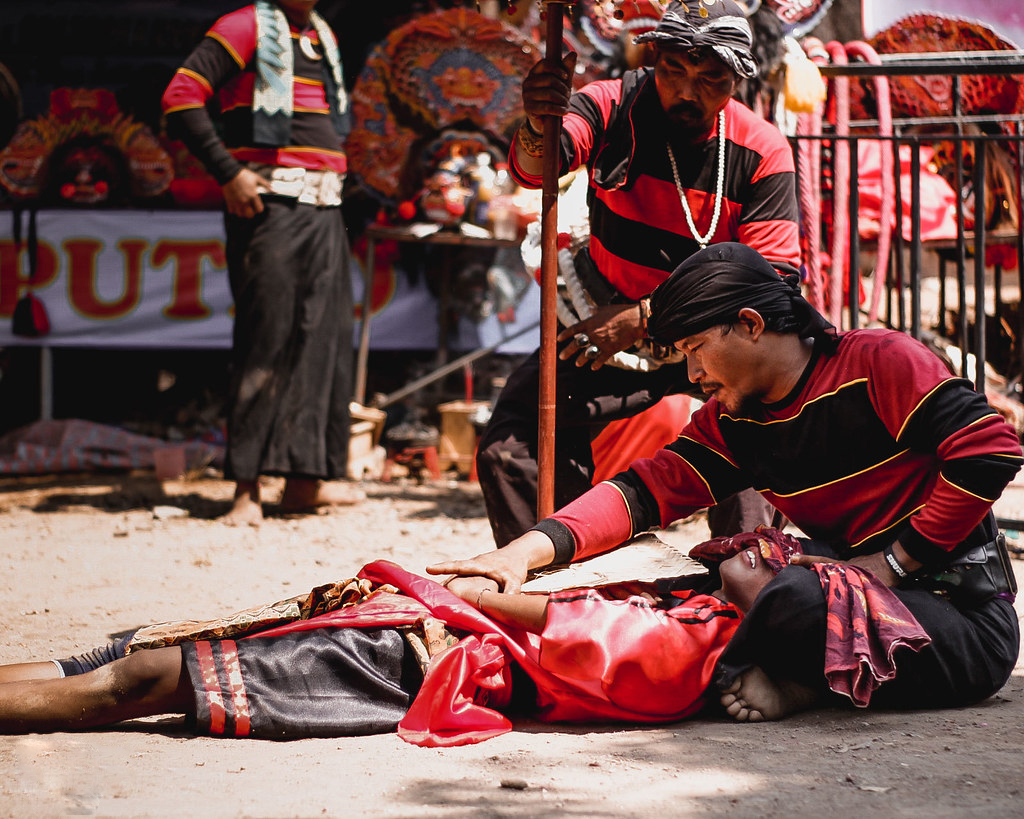
This vibrant art form is heavily influenced by iconic wayang characters like Gatotkaca, Werkudara, Puntadewa, Arjuna, Srikandi, and Subadra, portrayed by six dancers, including four males and two females. Their performances are characterized by intricate hand and foot movements such as side bends, reflections, piercing, overlapping, devil claps, and heaven and earth gestures. Jaranan Pegon embodies a fusion of tradition and storytelling, showcasing the cultural richness of Trenggalek in a dynamic and captivating manner.
the Structure of Jaranan Pegon
#1. Offering Sesaji
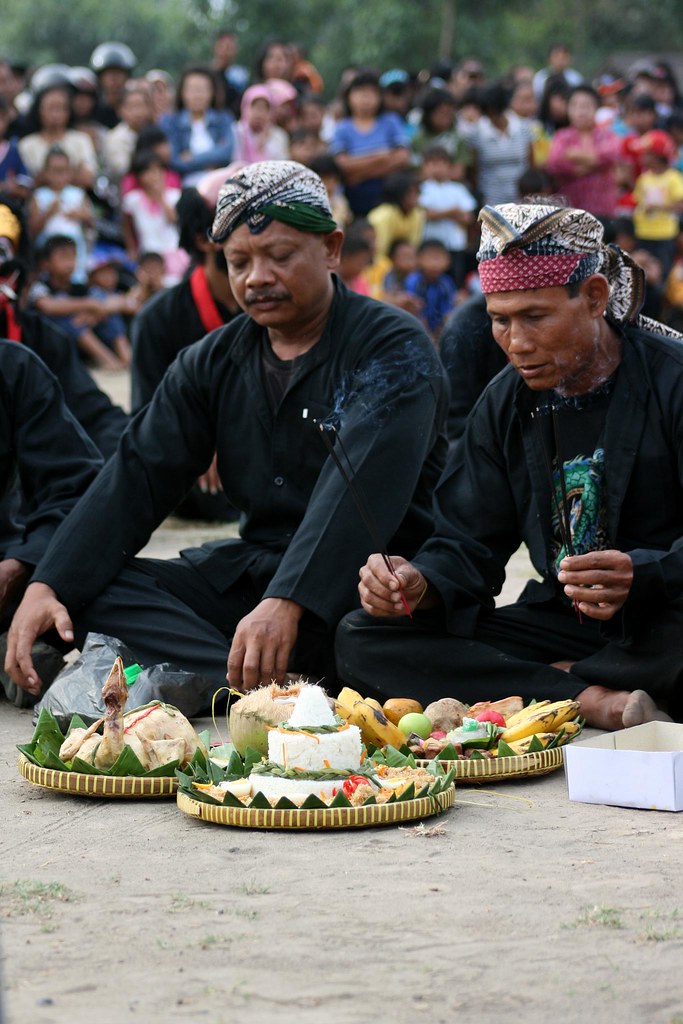
Before the performance of Jaranan Pegon, an offering sesaji is presented. During this ritual, elders burn incense until smoke rises. Then, they become possessed by spirits and consume the offerings provided, including bananas, kenang flowers, dawet (a traditional drink), coconut, and more.
#2. The Dance of Jaranan Pegon
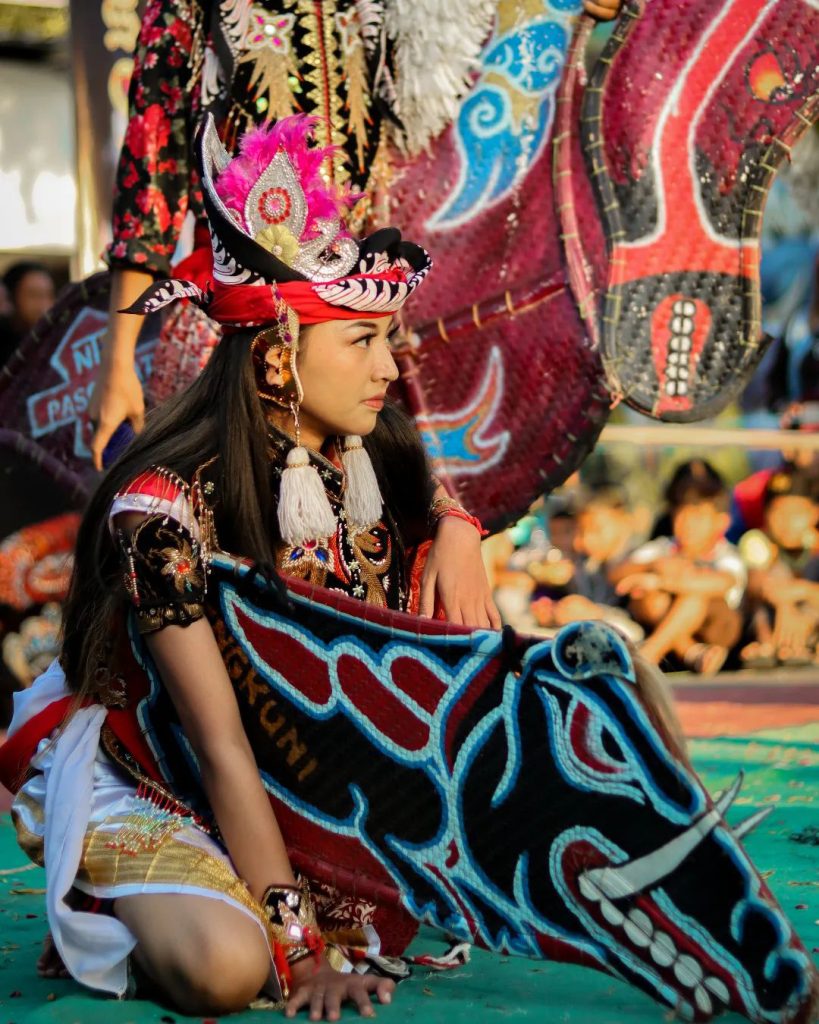
Jaranan Pegon, comprised of six Jaranan dancers and one celeng dancer, begins by forming a pattern on the floor, designated as Area A. The celeng dancer stands in the middle, performing rituals. Then, all dancers form a circle and rotate in opposite directions—Jaranan dancers to the right and celeng dancer to the left. This opposite rotation symbolizes the right side representing human goodness and the left side representing human evil.
#3. The Battle of Celeng and Jaranan
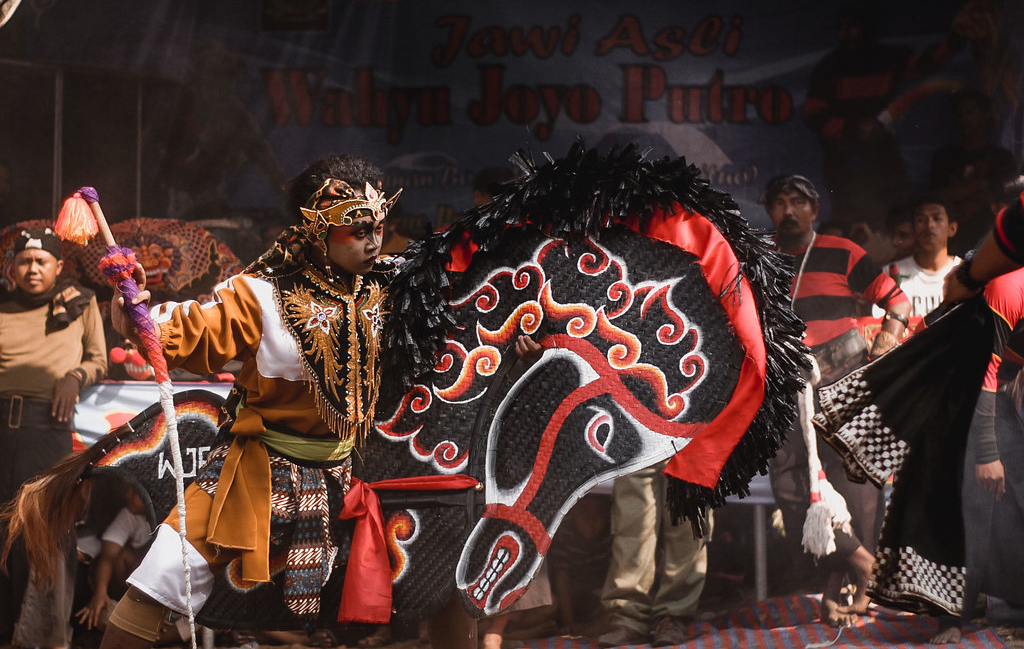
Next, a battle ensues between the celeng dancer and the Jaranan dancers. They align in a straight line, symbolizing unity and cooperation to overcome challenges.
#4. The Battle of Barong and Jaranan Dancers
A battle unfolds between the Barong and the Jaranan dancers.
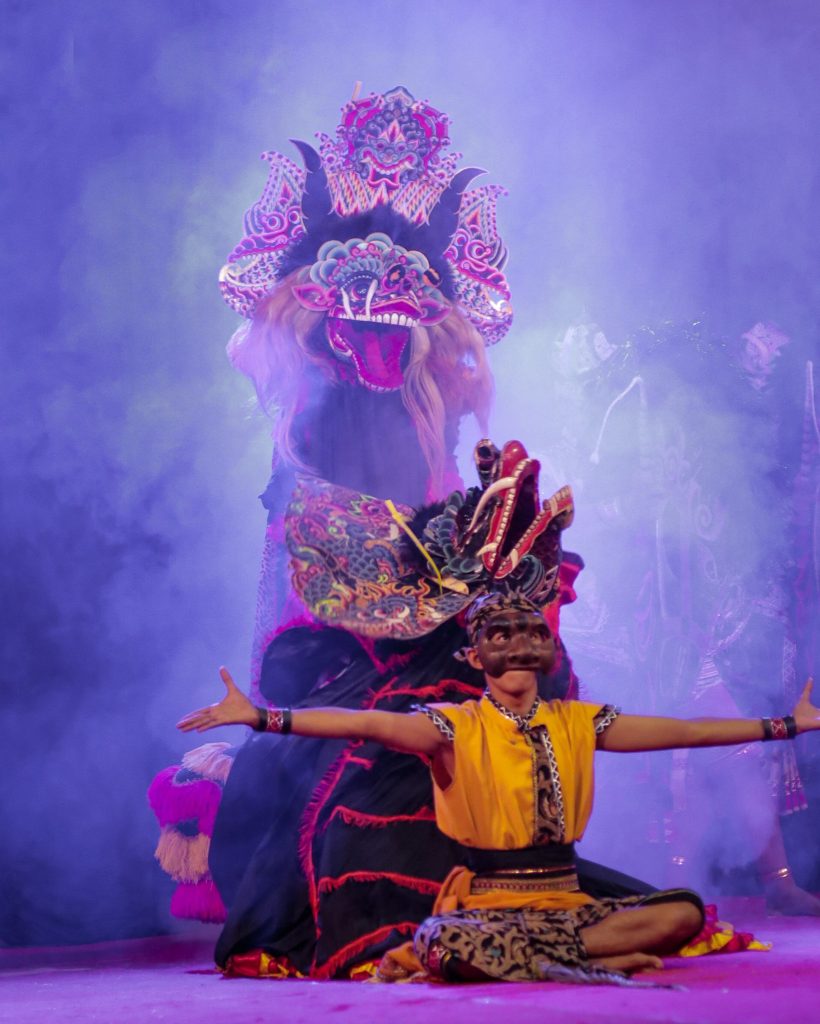
The formation remains aligned as in the previous battle, with the Barong and three Jaranan dancers engaging in combat. The Barong symbolizes the negative traits of humanity.
The Elements of Jaranan Pegon
In the enchanting realm of Jaranan Pegon , five key elements shape its essence. Here’s a breakdown of each element, unveiling the essence of this traditional art form:
1-Character Portrayal
Jaranan Pegon embodies various iconic characters:
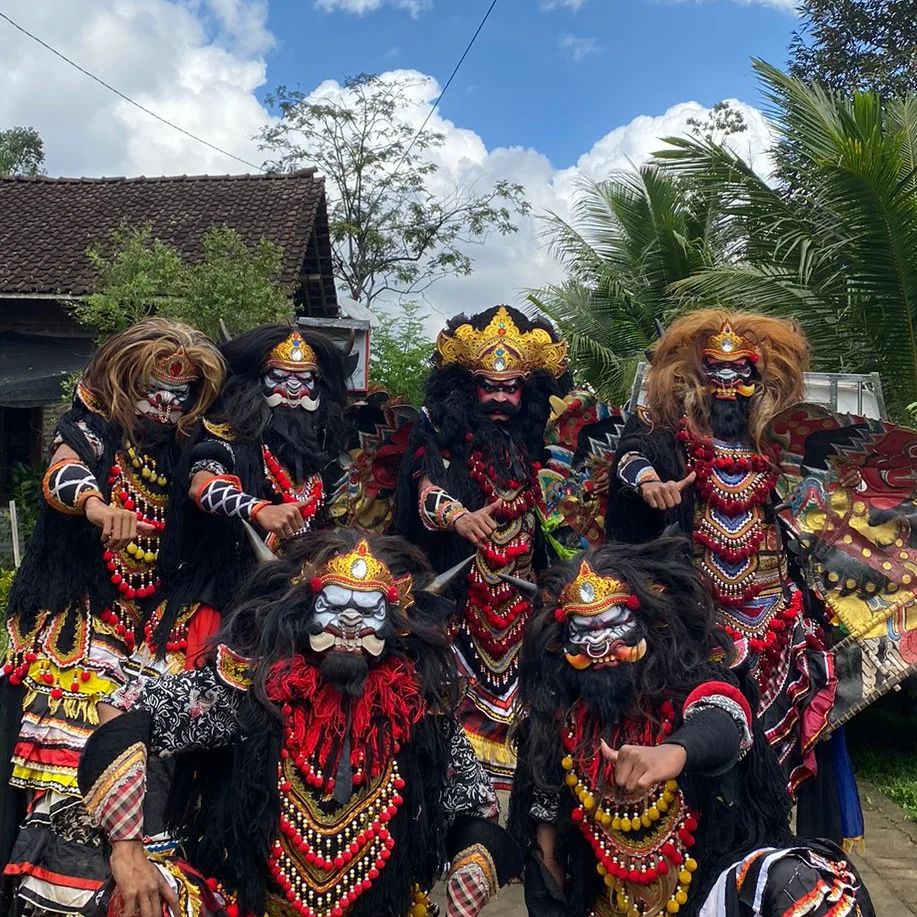
- Gatotkaca: Portrayed as a resilient figure combating invaders.
- Werkudara: Known for his strength in resisting invaders.
- Puntadewa: Symbolizes honesty and goodness.
- Arjuna: Represents wisdom in decision-making.
- Srikandi: Depicts a brave female warrior.
- Subadra: Reflects human gentleness.
- Celeng: Characterized by greed.
- Barong: Portrayed as vengeful, evident in the strength of the Barong’s caplokan.
2-Formation Patterns
Three formation patterns are observed, pattern A, circular, and parallel. Rightward rotations symbolize positivity, while leftward rotations signify negativity.
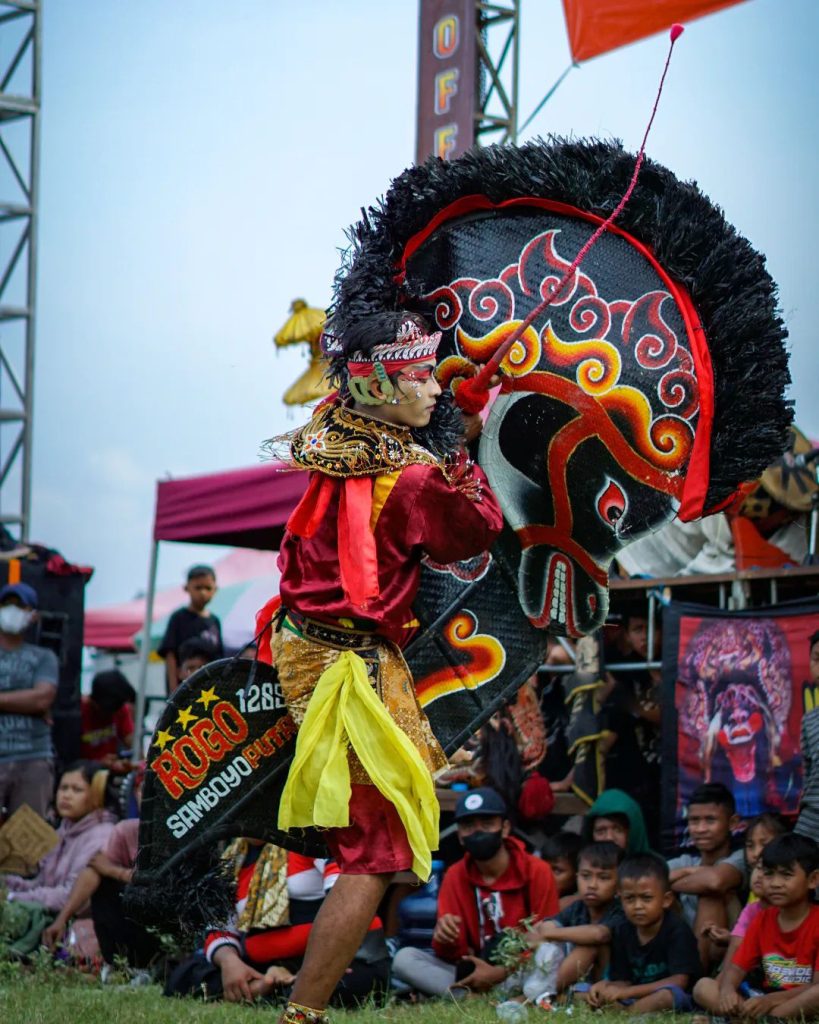
Parallel formations depict unity against adversaries, including the Barong and celeng.
3-Musical Accompaniment

Jaranan Pegon performances are accompanied by pelog gamelan instruments: kendang, kempul, kethuk, slompret, and saron.
4-Costume Arrangement
Costumes align with character portrayal:
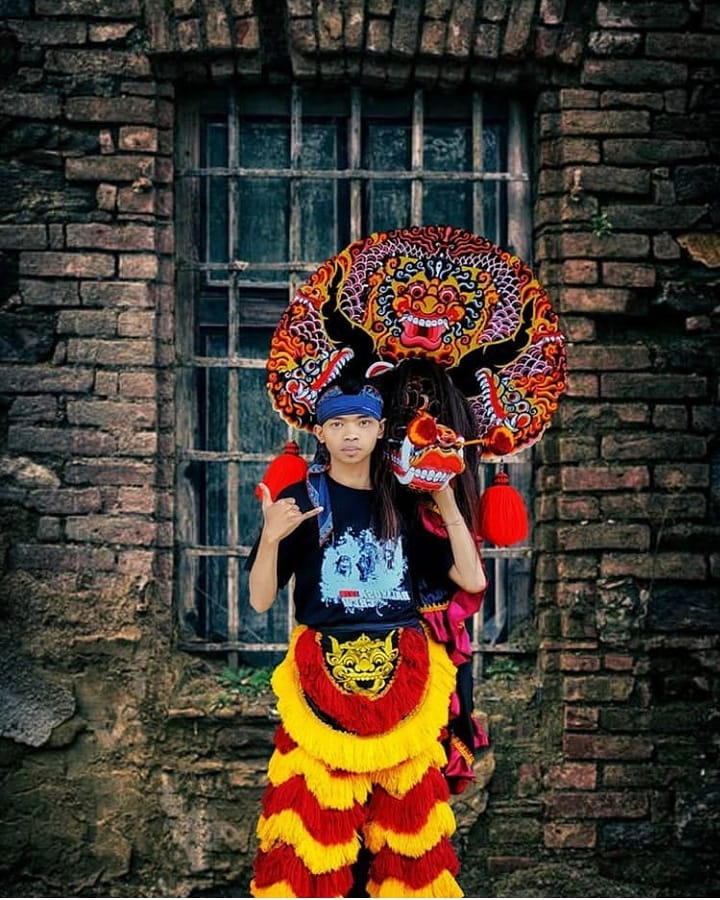
- Gatotkaca and Werkudara wear praba.
- Puntadewa and Arjuna don arrows.
- Celeng wears black attire.
- Barong adorns kombor pants and checkered jarik.
- Other dancers wear white attire with various accessories.
5-Props
Essential props include:

- Kuda Kepang: Woven bamboo horses symbolizing characters, varying in size based on gender.
- Celengan: Specially crafted from cowhide resembling wild pigs, emitting sound effects during performances.
- Barongan or Caplokan: Carved wooden props representing a dragon or large serpent, used by Barong dancers.
